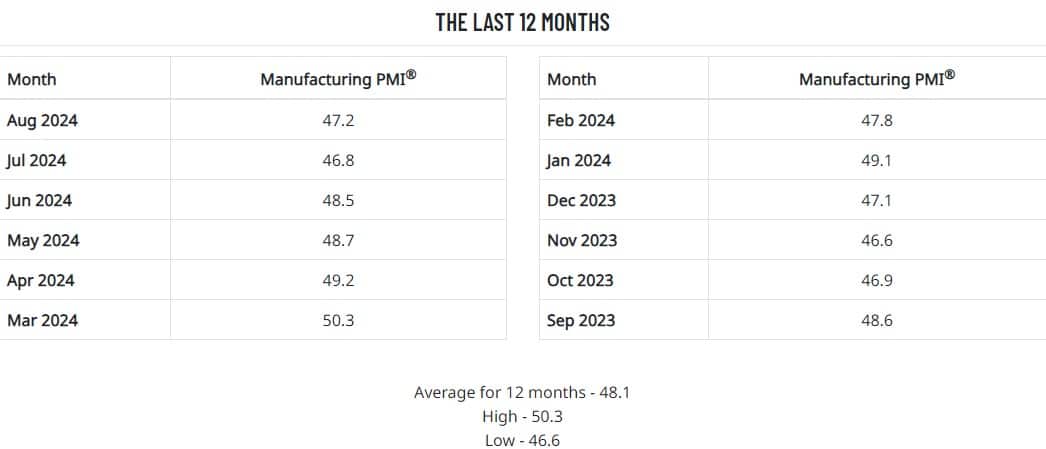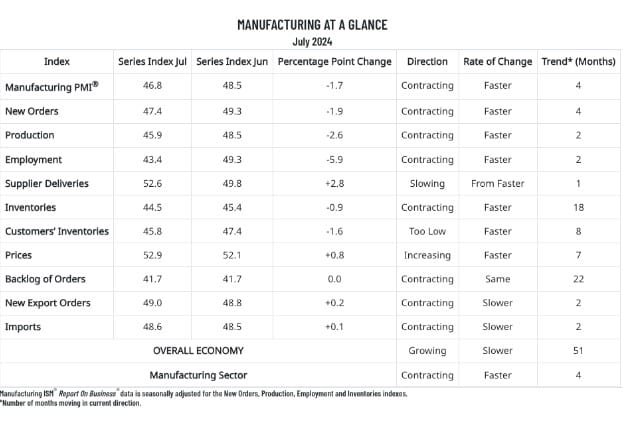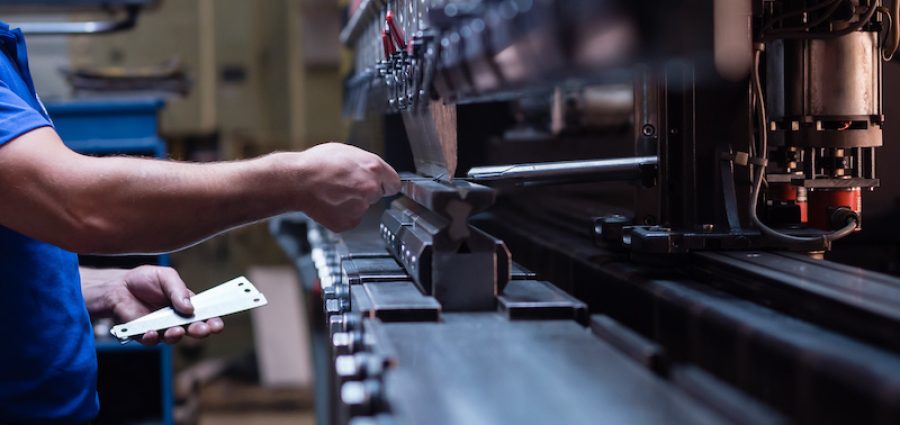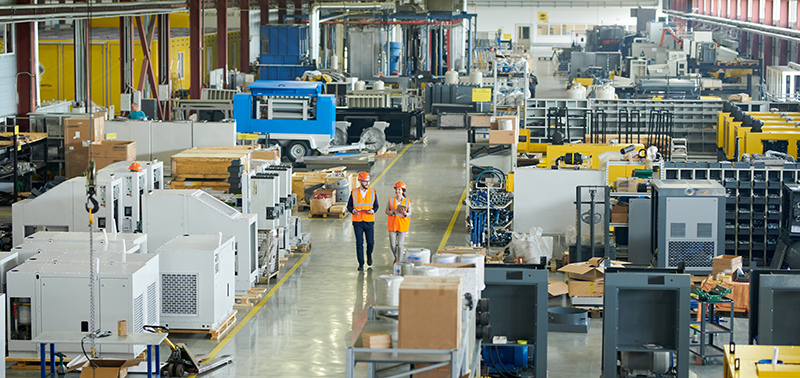The Institute for Supply Management released its monthly manufacturing Purchasing Managers Index (PMI) on Sept. 3 reflecting August activity, which showed an increase following four straight monthly declines.
The PMI — regarded as a reliable indicator of overall U.S. industrial economic health — rose 0.4 percentage points from July to a mark of 47.2%, indicating an expansion of overall economy. However, the mark signifies that demand continued to be weak, output declined and inputs remained accommodative.
Economists polled by Reuters had forecast a PMI increase to 48.0%.
The August PMI reading indicated contraction (anything below 50.0%) for the 52nd consecutive month.

Of the August PMI’s 10 factoring indexes, seven ended the month in contraction territory. The overall figure was driven up by increases of 5.8 points in inventories, 2.6 points in customers’ inventories and 2.6 points in employment.

“Demand remains subdued, as companies show an unwillingness to invest in capital and inventory due to current federal monetary policy and election uncertainty,” ISM Manufacturing Business Survey Committee Chairman Timothy Fiore said in the August report. “Production execution was down compared to July, putting additional pressure on profitability. Suppliers continue to have capacity, with lead times improving and shortages not as severe.”
Fiore added that 65% of manufacturing GDP contracted in August, down from 86% in July. He said that the share of sector GDP registering a composite PMI calculation at or below 45% — considered a good barometer of overall manufacturing weakness — was 33% in August, a 20-point jump from July.
The five manufacturing industries reporting growth in August were, in order: Primary Metals; Petroleum & Coal Products; Furniture & Related Products; Food, Beverage & Tobacco Products; and Computer & Electronic Products.
The 12 industries reporting contraction in August were, in order: Textile Mills; Printing & Related Support Activities; Nonmetallic Mineral Products; Plastics & Rubber Products’ Electrical Equipment; Appliances & Components; Fabricated Metal Products; Transportation Equipment; Wood Products; Machinery; Paper Products; Chemical Products; and Miscellaneous Manufacturing.
ISM PMI Respondent Commentary
- “A noticeable slowdown in business activity. Staffing and products rationalization has been triggered. Previous optimism about future growth has been dashed.” [Chemical Products]
- “Backlog has dropped in half as invoicing remains strong, but orders have slowed significantly. Hoping to see orders pick back up for the fourth quarter and into 2025 but expect third quarter to remain slow for incoming orders.” [Transportation Equipment]
- “After a slow start and lower year-over-year sales volume during the first half of the year, we are now seeing a mild increase in year-over-year sales volume, along with more steady growth.” [Food, Beverage & Tobacco Products]
- “Business outlook is good. Recovery from the electronics slowdown is strong for the second half of the year.” [Computer & Electronic Products]
- “New order intake is sluggish at best. Interestingly, even though orders are down, inquiries are up. Customers have indicated capital has been approved for equipment purchases, but they were directed to put projects on hold until the fourth quarter of 2024. This indicates the uncertainty around the election. We anticipate a strong end of the year, with a rise in backlog going into 2025.” [Machinery]
- “Our order levels are on a slow, steady decline; it looks like the trend will continue through the end of the year. We are downsizing through attrition and not hiring backfills, but there have been no layoffs to date. The bright spot is a few customer programs have helped increase orders for parts, resulting in some production areas to be very busy while others have little work. Redeploying people where we can.” [Fabricated Metal Products]
- “New orders continue to be strong, and inventories are slightly down as a result. Supplier lead times seem to be creeping back up in certain categories.” [Miscellaneous Manufacturing]
- “Business is cooling down, and we don’t expect a rebound until after the election is over. As we build our 2025 budget, we continue to have deep concerns about the added environmental costs on energy.” [Paper Products]
Related Posts
-
Missing economists' expectations of an increase, the latest PMI reading indicated contraction for the 19th…
-
It’s the latest economic indicator that demand remains subdued in the U.S. manufacturing sector.
-
The industrial economy barometer has been in contraction territory for 18 of the past 19…





